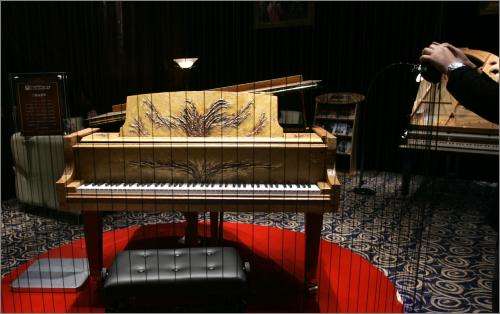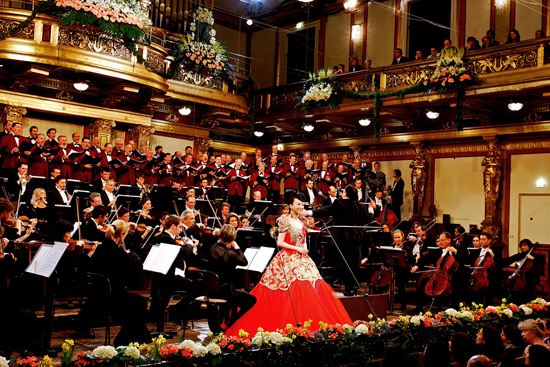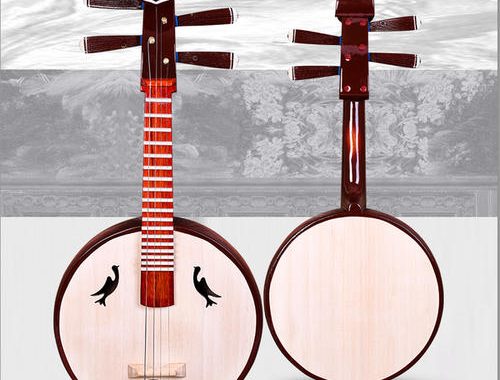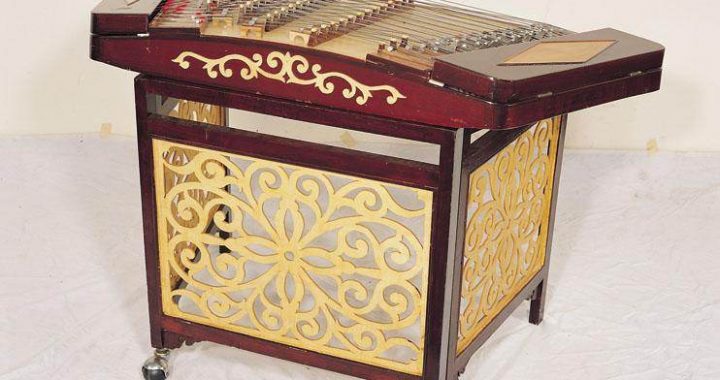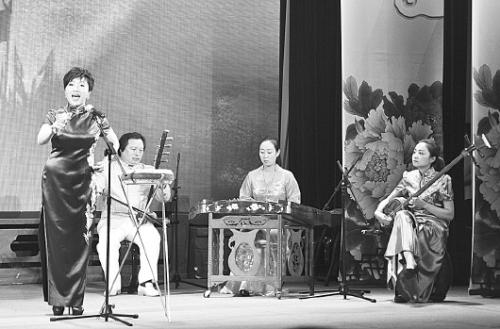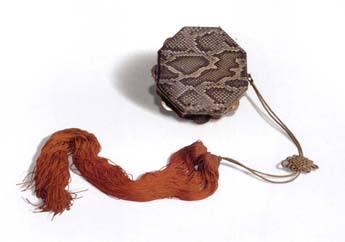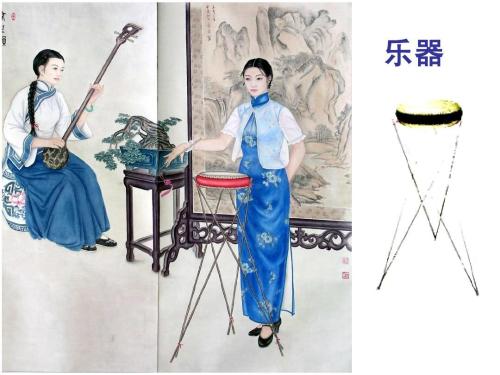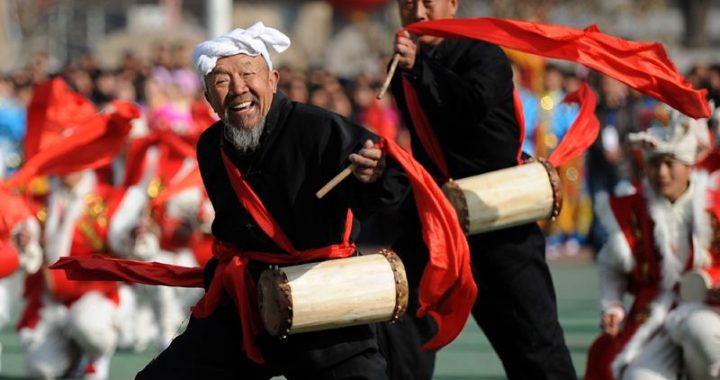Matouqin (horsehead fiddle)
2 min readThe Zheng (zither), like the pipa (lute) and ruan (round lute), is a distinctively Chinese plucked string instrument that is often used for solo performances. The Zheng came into widespread use during the late Spring and Autumn Period (7 70-476 BC). The oldest archeological example, approximately 2 500 years old,is quite similar in form to later versions. The modern Zheng consists of a flat, rectangular soundbox made up of back, side, and top panels. The strings are stretched over a series of bridges set diagonally across the top, and are attached to tuning pegs at one end. The early Zheng gradually developed into small, medium,and large versions. Today’s Zheng generally has thirteen to sixteen strings, tuned to a pentatonic scale and covering a three-octave range. The right hand plucks the strings to produce the melody, while the left hand presses the strings against the surface to control the pitch. The Zheng is characterized by its mellifluous tone and highly embellished melodies. It is capable of producing both chords and single notes, and can simultaneously produce six discrete notes when plucked with both hands. In addition to serving as a solo instrument, the Zheng often is used to accompany song and dance entertainments and traditional opera.
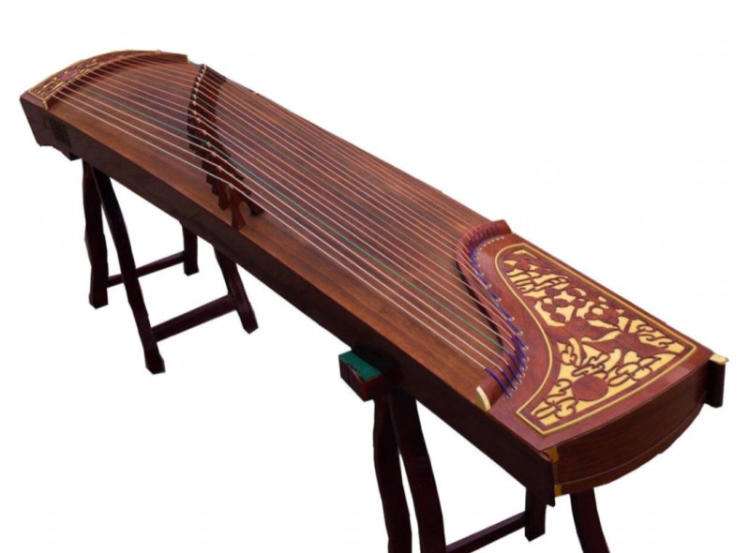
Zheng (zither)
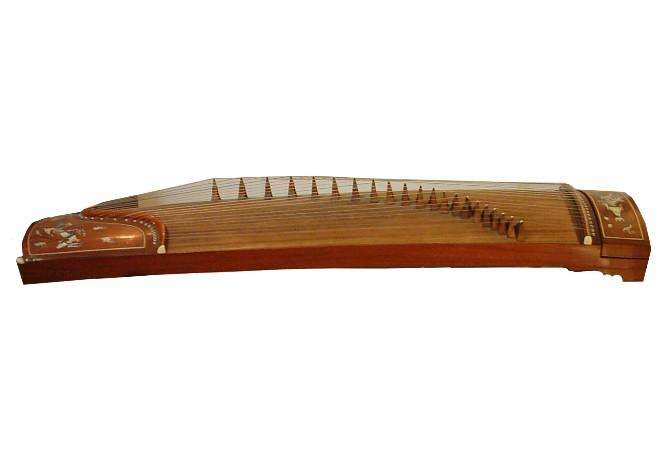
Chinese instrumental folk ensembles are composed of a number of instruments, which perform music scored for multiple parts. The instruments may be of the same or different families. Instrumental ensem-bles have a long history in China, dating back to the zhongqing (bell and chime) music of the pre-Qin period (prior to 221 BC). During the Han-Wei period (202 BC-263 AD), yuse (pipe and zither) andguchui (percus-Sion and wind) styles became the most widespread forms. Subsequent popular styles included xiyue (fine music) and qingyue (crystal music) during the Song-yuan period; xiansuoyue (string music) and shifanyue (ten-instrument music) during the Ming-Qing period; and today’s chuiguyue (wind and percussion music),shengguanyue (pipe and wind music), and Guangdong-style music. All styles, without exception, are full of color and variety. Contemporary chuiguyue (wind and percussion music) generally uses a horn, such as the suona (double-reed horn) and guanzi (reed horn) as the lead instrument, accompanied by strings and percussion. Regional variations such Hebei chuige (wind songs) and Shanxi badatao (eight-piece ensemble) use the guanzi as the lead instrument; while Shandong chuiguyue (wind and percussion music) is usually led by the suona (double-reed horn) or dizi (transverse flute). These ensembles also may include the sheng (reed pipes); flutes such as the bangdi, qudi, or koudi; percussion instruments including thegu, nao, bo, xi-aocha, dangdang, and yunluo; and string instruments such as the longtouhu, erhu, and qinqin. The size and composition of Chinese folk ensembles vary depending on regional style. Among the many instrurnents that may be included, the suona (double-reed horn), guanzi (reed horn) and sheng (reed pipes), with their characteristic voices, are the most distinctive.
